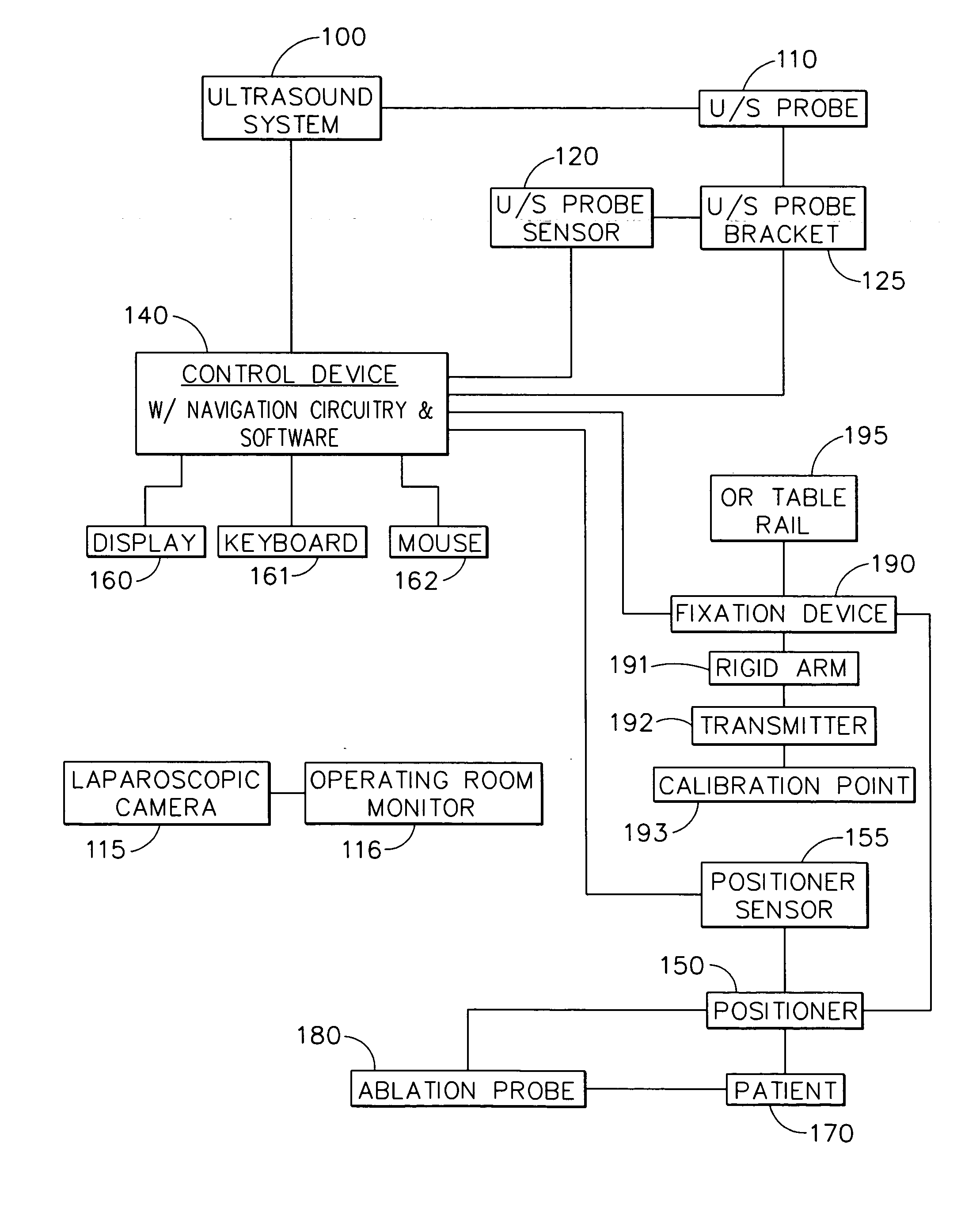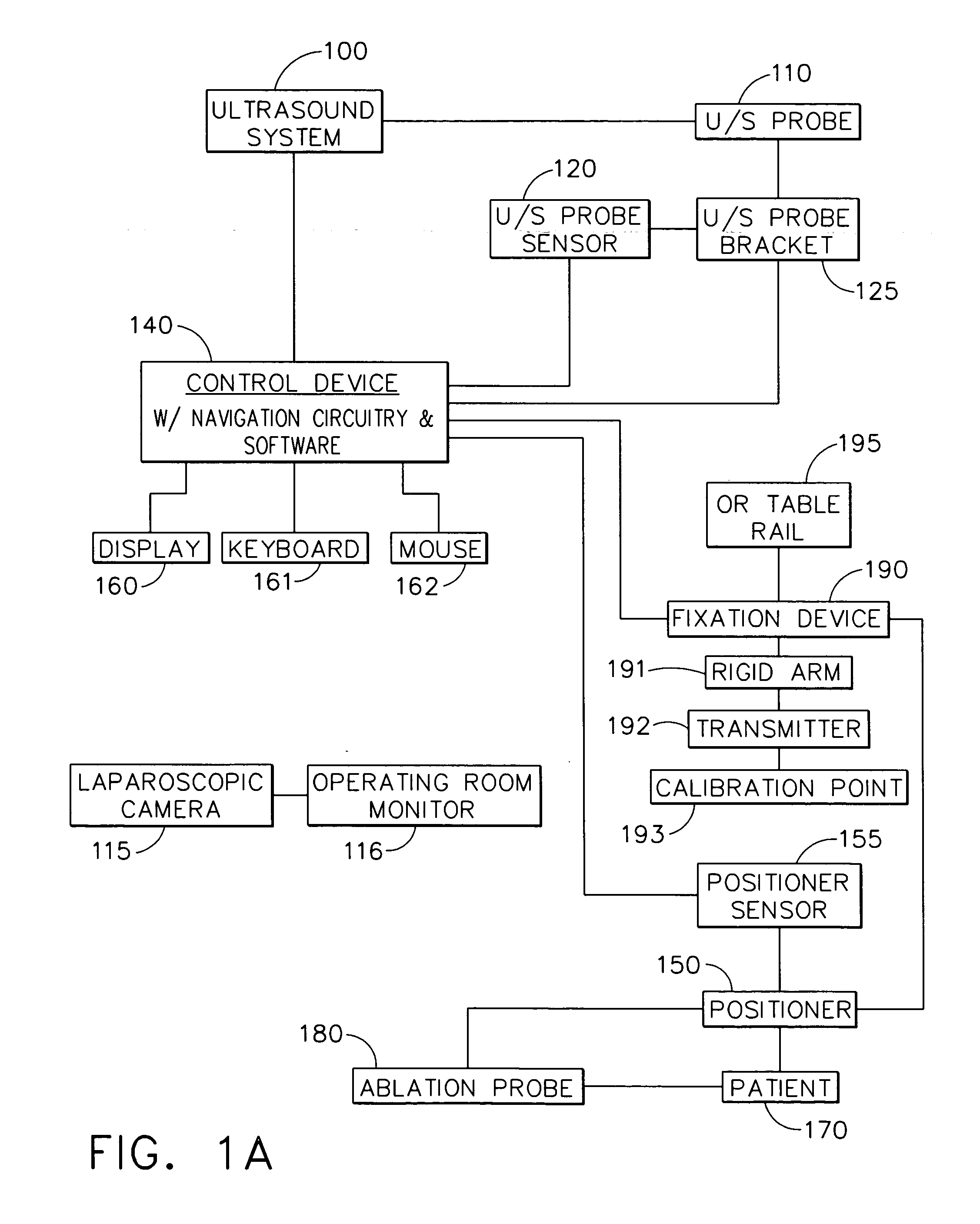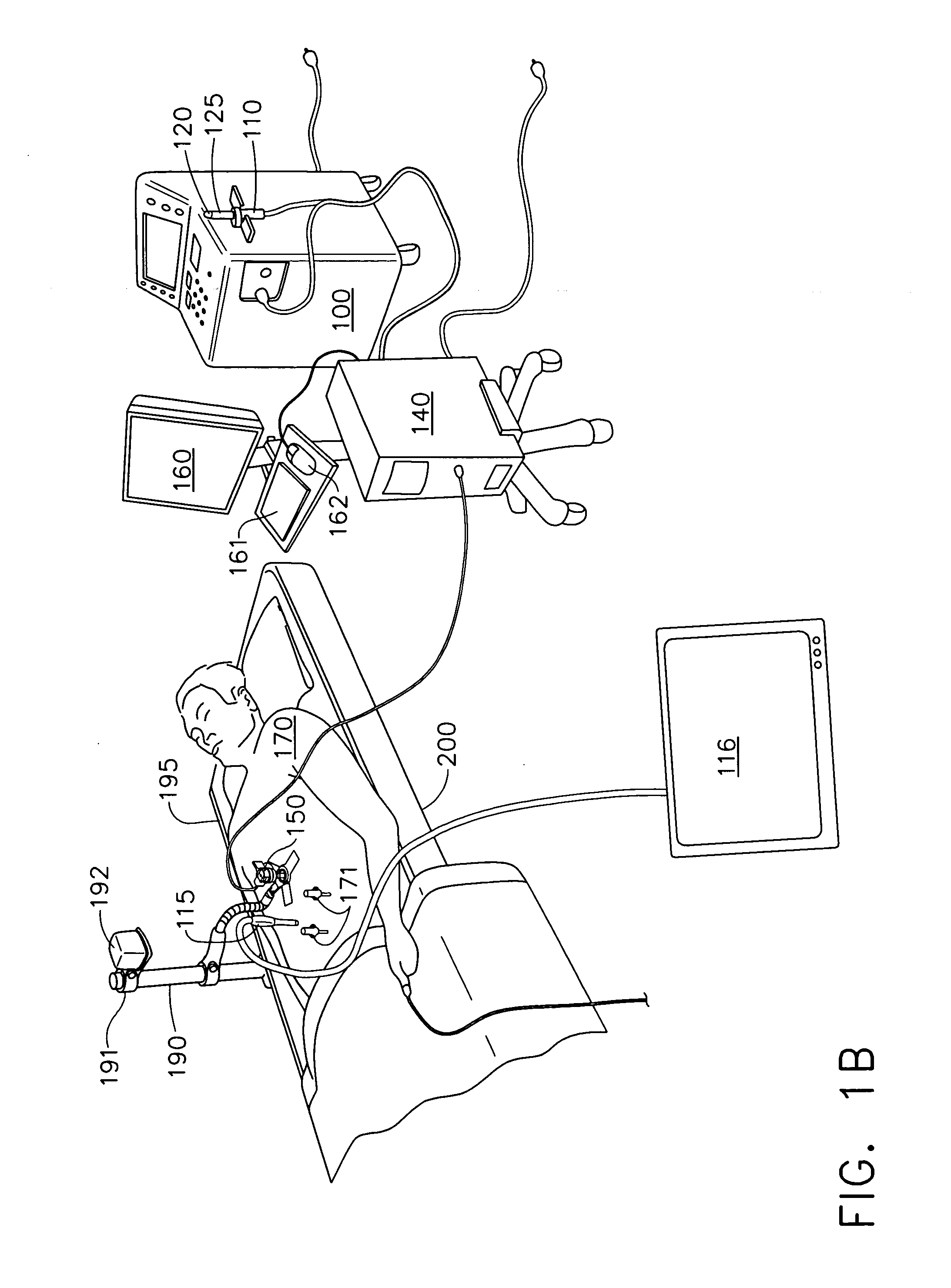System and method for planning treatment of tissue
a tissue and system technology, applied in the field of tissue system, can solve the problems of difficult procedure, tumor reoccurrence, physical limitations that frequently prevent inline placement of ablation and ultrasound probes, etc., and achieve the effect of determining the effective treatment volume of the surgical devi
- Summary
- Abstract
- Description
- Claims
- Application Information
AI Technical Summary
Benefits of technology
Problems solved by technology
Method used
Image
Examples
second embodiment
[0040] Referring now to FIGS. 3A and 3B, in a first aspect of the invention, the positioner 150 consists of a stem assembly 300 and a depth stop assembly 320. Within the stem assembly is an outer stem 310 that includes a semispherical portion 331. Semispherical, as used herein, means having the shape of a portion of a sphere. The semispherical portion 331 has a stem radius 330 with slots 311 that enable the stem radius 330 to nestle into a corresponding frame radius 341 of frame 340. The stem radius 330 and the frame radius 341 function similarly to a ball joint, allowing the outer stem 310 to rotate with respect to the frame 340. In an alternative embodiment, the outer stem 310 may be connected to the frame 340 by a ball joint.
[0041] An inner stem 315 including a stem flare feature 322 that mates with the inside surface of the semispherical portion of the outer stem 331 is positioned within the outer stem 310. The inner stem 315 has a channel 800 into which a needle-like surgical d...
first embodiment
[0046] As in the first aspect of the invention, the knob 380′ has a ramp surface 326′ that engages an outer stem ramp surface 323′. Grasping the knob 380′ and rotating it to one side draws the inner stem 315′ through the outer stem and, consequently, draws a semispherical portion 331′ of the outer stem into a mating frame radius 341′ of a frame 340′. Slots 311′ allows the stem radius 330′ of a stem flare feature 322′ of the outer stem 310′ to expand and reactive forces fix the angular position of the outer stem 310′ in the chosen orientation, locking the trajectory of any inserted surgical device.
[0047] In one embodiment, the frame 340′ is attached to a holder 325′ by hinge pin 342′ feature that mates with a hinge recess 343′ of a holder 325′. A snap lever 391′ engages a snap catch 392′ to secure the frame 340′ within the holder 325′. The holder 325′ has a clip end 303′ which may be attached to the mating receptacle 304′ of a fixation device 190′ to hold the positioner 150′ in place...
third embodiment
[0052] Referring now to FIGS. 8A and 8B, a first aspect of the invention includes a sliding disk 310″ which allows the surgeon to adjust the insertion point after the holder 325 has adhered to the patient. As used herein, insertion point is the point on the skin of the patient where the ablation probe is inserted. In the embodiment depicted in FIGS. 8A and 8B, the stem assembly 200″ has a single stem 210″ with a semispherical portion 231″ at its distal end. The semispherical portion 231″ has a stem radius 230″ that nestles into a corresponding frame radius 241″ of a frame 240″ and a bottom surface that bears against patient 250″. The stem radius 230″ and the frame radius 241″ function similarly to a ball joint, allowing the stem 210″ to rotate with respect to the frame 240″. Therefore, the center of angular rotation of the stem radius 230″ is at or near the skin of the patient 250″ without significant skin deformation, maximizing the range of motion through a small incision in the s...
PUM
 Login to View More
Login to View More Abstract
Description
Claims
Application Information
 Login to View More
Login to View More - R&D
- Intellectual Property
- Life Sciences
- Materials
- Tech Scout
- Unparalleled Data Quality
- Higher Quality Content
- 60% Fewer Hallucinations
Browse by: Latest US Patents, China's latest patents, Technical Efficacy Thesaurus, Application Domain, Technology Topic, Popular Technical Reports.
© 2025 PatSnap. All rights reserved.Legal|Privacy policy|Modern Slavery Act Transparency Statement|Sitemap|About US| Contact US: help@patsnap.com



